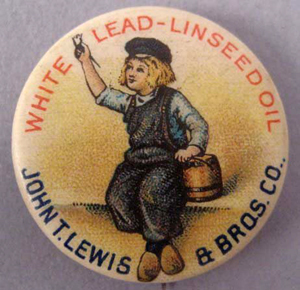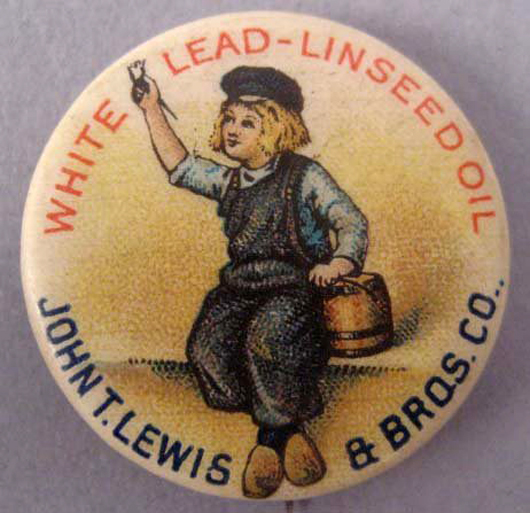
CRYSTAL RIVER, Fla. – Some days I begin to feel like a third grade teacher who has been teaching way too long. Sometimes it gets discouraging to have written as much about furniture as I have and still have not been able to penetrate the consciousness of what appears to be an incredible number of furniture collectors who regularly read publications in which my work appears. Of course, I am “on the front line” everyday taking on the furniture inquiries of almost anyone who has a computer and an interest as well as anyone who still remembers how to write an actual hard copy letter and mail it. Out here in the field it is amazing how many “furniture fables” still persist in this information age of the Internet and the Antiques Roadshow. Here are few examples I have recently encountered.
LINSEED OIL AS A FINISH DRESSING
Recently I was engaged in a long multipart discussion in an online forum with a couple of folks who seemed to be well informed and interested. The subject was paste wax. All of a sudden someone who had not been in the conversation previously jumped in and interjected the opinion that talk of paste wax was just a waste of time. “Everyone knows that the best possible furniture care solution is a homemade mixture of boiled linseed oil, turpentine and white vinegar,” she said. To my surprise I responded with an absolute lack of profanity, calmly explaining the hazards of the use of boiled linseed oil over the long haul and referring the reader to the site of the American Institute for Conservation of Historic & Artistic Works for a quick look at their take on boiled linseed oil. However, I doubt that I made on impression on the folk fable of linseed oil. I provided a closer, more detailed look at furniture finish care which I will be happy to share by email request with any interested reader that further explores old and new concepts in furniture finish thinking.
DON’T TOUCH THAT FINISH
This mantra has spread through the American furniture psyche like an imported virus reaching down to the smallest shop in the mall dealing in 1960s modern furniture. It is so broadly misapplied that I receive a number of inquiries each month asking for an estimate of the potential lost value of a family heirloom since Uncle Joe refinished it 30 years ago. It doesn’t matter that the heirloom turns out to be a factory-made, mass-produced piece of mail-order junk with little or no value to start with. The fear of lost value is almost palpable.
So is it a justifiable fear? It certainly can be if you are dealing with an 18th century American piece of work. It also can be true if the piece of furniture is later but has a provenance that requires special attention. It could even be true for certain 20th century items made and finished by an accomplished craftsman like George Nakashima or Wallace Nutting. Of course it is always advisable to proceed with caution on this subject but if it turns out that the piece in question is a factory-made Depression-era piece or set that displays the slings and arrows of outrageous fortune all over its surface, then what is the harm of replacing one modern sprayed finish with a better one?
Having been in the restoration business for many years I understand the importance of trying to salvage an original finish if possible and still meet the expectations of the owner but if that isn’t possible other steps must be taken.
You can pretty well bet that Duncan Phyfe, Charles Honoré Lannuier, J. & J.W. Meeks and plenty of other renowned furniture designers and makers did not out their new wares with crusty, dark, bubbly finishes. So what’s the big deal about the original finish? It serves as a sort of certificate of authenticity for the modern day dealer or buyer. It isn’t especially pretty. You sometimes hear top end dealers or collectors say “Look at that lovely old finish” but they don’t mean the bubbled up dark shellac is a pretty finish all by itself. It means the finish helps to bolster the claim of age and therefore the price of a piece in their inventory or collection. Granted there are some very nice mellow old original finishes that are quite attractive but that’s not what I am talking about. You would never want to disturb a finish like that but an opaque crackled and bubbly surface from 1840 certainly deserves another look. There might actually be something beautiful under there that could be made to look just as Mr. Meeks intended it to look.
HANDMADE IS OLD AND VALUABLE
Since all furniture before the middle of the 19th century is basically handmade that covers a lot of territory. It also covers all the old farm furniture that was truthfully marginal in its day. Most farmers were better farmers than they were craftsmen and, yes, while the old farm piece may in fact be old that doesn’t necessarily make it valuable. There is a lot of old handmade junk still out there. It is sometimes discouraging to admit that even some professional furniture makers of the 18th and 19th centuries were known to make less than extraordinary examples of their work but they had to pay the rent just like everybody else.
There is still a lot of furniture being handmade today, some of it in small studio type settings, some in isolated garages and some in high school shop classes. Some of this handmade furniture is quite good but it certainly isn’t old and value is often in the eye of the maker or the recipient of the piece. That also includes the table Grandpa made when he was a teenager on the family farm. To the family it is a priceless heirloom but in the real world it is just a quaint piece of folk art that may or may not have any value at all.
THE FAMILY FABLE
Perhaps the most common of all the furniture fables I run across involves the incredibly intricate story of a given piece, at least according to family history. As I have previously expressed in this space and in many others, family history is the least reliable of all sources for the history of furniture. The most recent example to cross my desk concerned a hand painted bedroom set from 1922 (the date was on the back of the mirror glass). The writer relayed to me that the set had belonged to his grandmother. According to family history only 48 sets of this furniture were made, one for each state in the Union in 1922. Grandma’s father had bought the set designated for Oklahoma for her in Oklahoma City.
A close examination of photos of the set revealed a startling fact – it was not a set at all. The set consisted of a chest of drawers, a dresser with a mirror, a tall bed, a writing desk and a chair. Each piece was elaborately painted – in a different theme. There was no consistency in the painting from piece to piece. While the two pieces of case goods had the same basic design the headboard had a shape totally unrelated to any other piece in the set and the writing desk and chair were even more different from all the to the pieces.
I relayed all of this to the owner but he remained unconvinced because that is not what Grandma told him years ago. I just let it go. Didn’t want to confuse the poor fellow with the facts.
Send comments, questions and pictures to Fred Taylor at P.O. Box 215, Crystal River, FL 34423 or email them to him at info@furnituredetective.com.
Visit Fred’s newly redesigned website at www.furnituredetective.com and check out the new downloadable “Common Sense Antiques” columns in .pdf format. His book How To Be a Furniture Detective is available for $18.95 plus $3 shipping. Send check or money order for $21.95 to Fred Taylor, P.O. Box 215, Crystal River, FL, 34423.
Fred and Gail Taylor’s DVD, Identification of Older & Antique Furniture ($17 + $3 S&H) is also available at the same address. For more information call 800-387-6377 (9 a.m.-4 p.m. Eastern, M-F only), fax 352-563-2916, or info@furnituredetective.com. All items are also available directly from his website.

ADDITIONAL IMAGE OF NOTE



